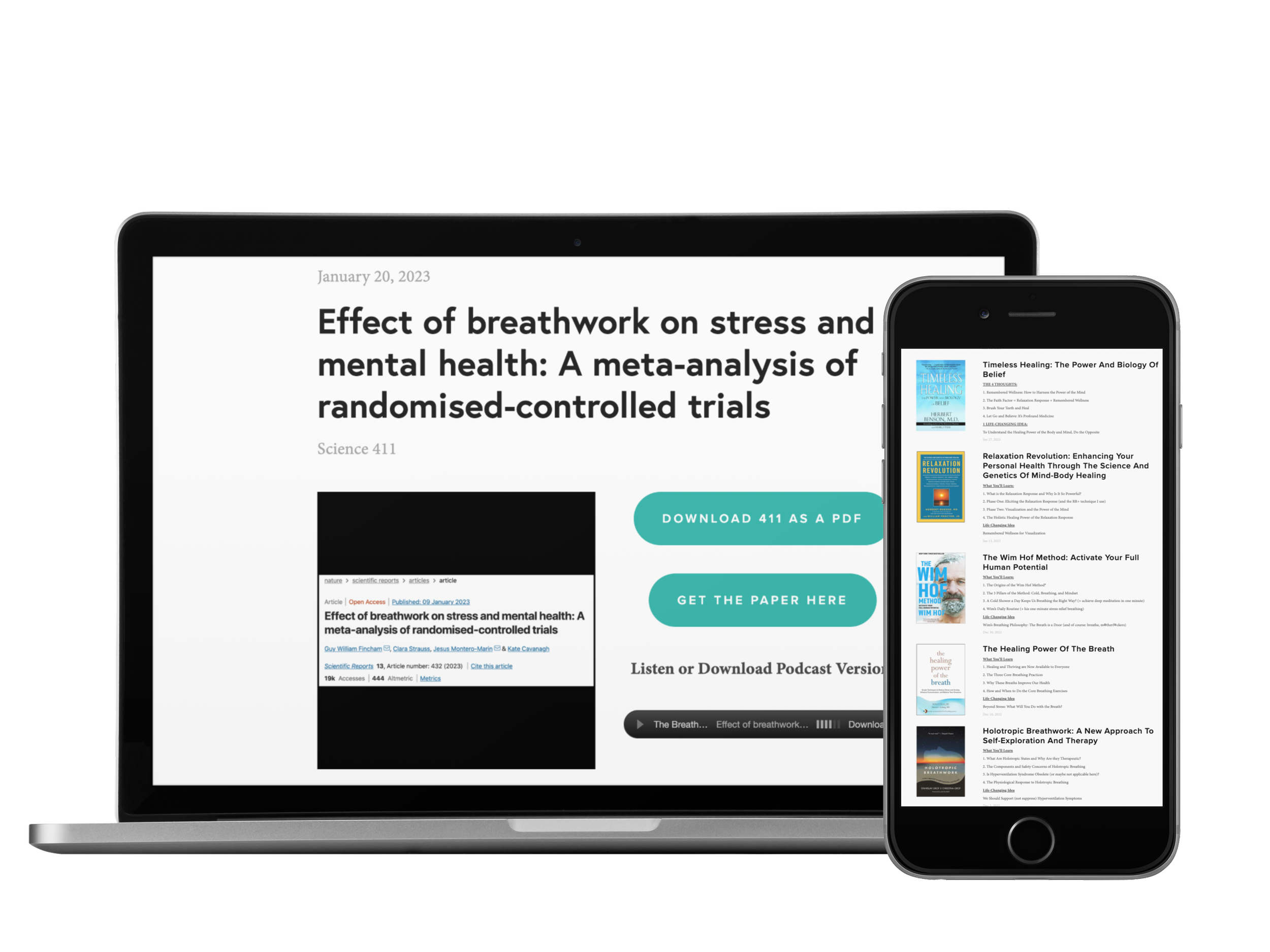Listen Instead of Reading
If you enjoy listening, you can subscribe to the audio version on Spotify, Apple Podcasts, and Audible so you don’t even have to look at the email 😊
Enjoy These Posts?
Reading Time: 1 min 30 sec
I hope the next 22’ish breaths are the most nourishing of your day.
4 THOUGHTS
1. Breathing Pattern and Mental Status
“Mental status (anxious versus calm) is reflected by breathing pattern and it is believed that conscious regulation is key to achieving control over mind/mental status.”
- Shreya Ghiya, Int. J. Res. Med. Sci. (2017)
Here is an excellent reminder that to regulate our mental states, we must first start by learning to consciously regulate our breathing 🙏
2. Surprisingly, It’s Not During Meditation
“Surprisingly, it is not during meditation that you make progress in meditation; it is during the rest of the day. What you do in meditation is get the power, install the dynamo; the actual work is done after you open your eyes, get up, and go out into the world.”
– Eknath Easwaran, Passage Meditation
What a great reminder that, ultimately, we make progress in meditation (and breathing) by bringing the results into the world. So here’s to carrying the calm, attentive, and joyful state we achieve during practice into our everyday life so we can truly advance 🙏
3. Key to Lung Expansion and a Long Life
“What Stough had discovered…was that the most important aspect of breathing wasn’t just to take in air through the nose. Inhaling was the easy part. The key to breathing, lung expansion, and the long life that came with it was on the other end of respiration. It was in the transformative power of a full exhalation.”
– James Nestor, Breath
What a great reminder of the power of a full exhale. By pushing more air out, we can get more in, improving lung capacity and (hopefully) lengthening life span 👏
4. It Will Lead You Where You Need to Go
“Follow the breath. Lean into it. The breath goes everywhere, and it will lead you where you need to go.”
- Wim Hof, The Wim Hof Method
That sounds like perfect advice to follow this week 🙏
1 Quote
“You’re more alive when body and breath are permeated with the energy of awareness.””
1 Answer
Category: The Nose
Answer: Research has suggested that stress hormones oscillate between the left and right sides of the body in connection with this.
…
(Cue the Jeopardy! music.)
…
Question: What is the nasal cycle?
In good breath,
Nick Heath, T1D, PhD
“Breathing is the compound interest of health & wellness.”
P.S. my worst fear too
Imagine Feeling that Way Every Day
If reading one of this week’s thoughts or quotes lightened your day in any way, imagine starting every day that way. That’s what the Breath Learning Center provides.
Each morning, you’re greeted by a brief, 30-second email with inspiring wisdom on breathing, meditation, and mindful living. Reading it is virtually guaranteed to start your day off right 🙏
Get started for as little as 16 cents a day.
The Breathing App for Diabetes
This is the first program specifically made for people with diabetes to help manage their stress through breathing and mindfulness practices. In addition to the amazing program inside the app, we have some really neat things coming up, so sign up now!
Amazon Associate Disclosure
I’ve been recommending books for almost 6 years. Yet somehow, I just discovered that I could be an Amazon affiliate [face-palm]. In any case better late than never. Now, any Amazon link you click is an affiliate link. As an Amazon Associate, I earn from qualifying purchases. So, if you’d like to support my work, buying books through these links is helpful : )
* An asterisk by a quote indicates that I listened to this book on Audible. Therefore, the quotation might not be correct, but is my best attempt at reproducing the punctuation based on the narrator’s pace, tone, and pauses.


